New Zealand 1850s SCHOONER-MANiA. KAURi. TRENAiL. DARiNG. Bezos' boat


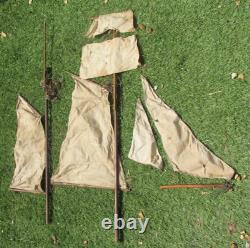

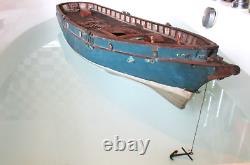

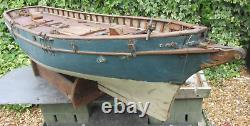
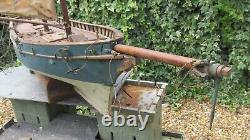
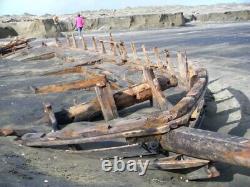
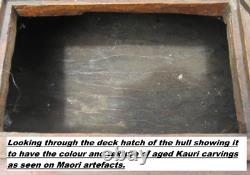
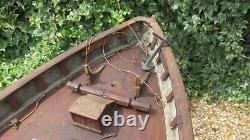
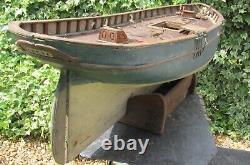
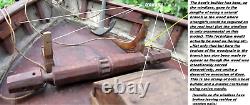

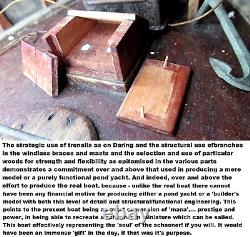
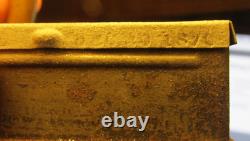
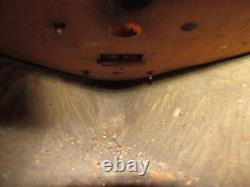

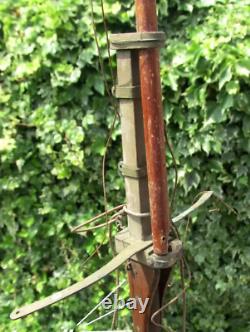
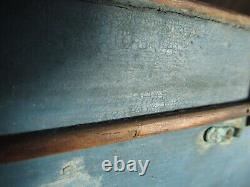
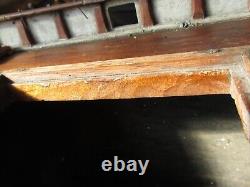

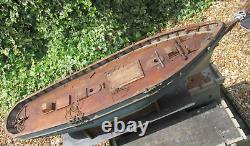
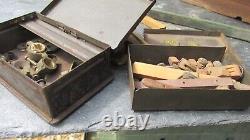

How many individuals in New Zealand had the ability to make this schooner in 1850? Over engineered as either a pond yacht or as a detailed'builder's model'. Exactly like the real boat with the exception of a solid carved hull, where suitable woods capable of making thin planks of Kauri with 1850s tools was not possible. How many today could do it?
Who was this particular person, in an 1850 population of c90,000? Is their DNA still on this boat? Which particular Schooner-maniac made it? Not only is the present boat the embodiment of'Schooner-mania', but, perhaps appropriately, it is singularly all that is left of it. Although seemingly paradoxical, in as much as it is not a real schooner, it nevertheless is an exemplar of'Schooner-mania', as it still physically embodies, and moreso distils, the'mana' driving the mania. And as a consequence, It of itself is enough. It, in all reality, tangibly and uniquely brings 1850s New Zealand'schooner-mania' into the here and now.. A unique living relic, still, projecting, ousing the'mana', driving the mania, now supercharged to a global level. Orere is both a plant (Senna Alata)- used for medicinal purposes - notably, in this particular case, it's bark extract is used as a kind of antiseptic in the making of tattoos.It is not native to New Zealand and requires a tropical climate. However, interestingly in respect of Maori, it is known and does grow in the Cook Islands. Orere is also West African (Yoruba) for'Friendship' or'Partnership' and the plant does grow there. Of note, the Maori lacked a written language at the time of this boat, although the figurative representation of Koru was/is imbibed with meaning and was ubiquitous on Maori artifacts of the day and indeed was/is a core design of tattoos (which some academics suggest are a kind of written language).
Also of note, in respect of a lack of language in 1850, - the inside port wall of the forward hatch is marked'L' in pencil. I wonder if this indicates that the person who made this boat was illiterate (in the Pakeha sense of the word) or had no written language; knowing only the difference between left and right and not enough to write or represent P or S for Port or Starboard? But nevertheless the maker of the boat knew as to what Port and Starboard referred. Via the market at Auckland.However it was recorded that often the Maori tribes would compete with each other for prestige, in the form of'mana' (a kind of spiritual wealth exemplified by hospitality- that was their tradition, even before the colonists arrived) and it is believed by some that the sudden arrival of monetary'wealth' which arose with the new business of supplying colonists, was translated into or exchanged for their more meaningful'mana', by the Maori. Such that, and in particular, - owning a schooner (or a flour mill if the tribe were inland) quickly became their highest manifestation of'mana'.
In the case of the new'super technology' of colonial schooners, effectively acquiring a new spiritual'power''over' the sea, (by demonstrating a Maori's'mana' to the sea, and especially connecting to the sea through the boat's name or figurehead, - in effect gaining or projecting a new, vastly'improved' and wider territorial claim or power over the sea).. This 1850s proliferation of the ownership of schooners by the Maori was christened by (pakeha) colonists of the time,'Schooner-mania'. Likely the name stuck or was first heard by the colonists, because it was considered and called'Schooner-mana' by the Maori: thus taking root in both cultures. Thus also likely, when one sees it presented like this, initially, a'maorism'. One might present' SCHOONER-MANiA' as a synthesis of the two ideas.However, the rapidly arriving'fad' for schooner ownership collapsed just as rapidly as it had arisen, before 1860, due a sudden widespread economic collapse of the market for Maori produce. (a kind of mini'south-sea bubble') (I wonder if there was push-back against the Maori owning schooners, especially such as the present one, with gun-ports). Against this background of boom in wealth and the acquisition of Schooners, (many by collectives), it appears that the present highly modeled, and structurally engineered, fully functional, contemporary schooner pond yacht, with its' Maori, Koru figurehead, and Koru (Kowhaiwhai) pattern stern nameboard - was built.
Indeed the proportional scale modeling, and realistic functional detail in miniature, including the strategic use of trenails, utilisation of the strength and flexibility of branches in conjunction with the selection of specific types of woods for different parts of the boat, including for the windlass and windlass's braces, faux ribs, and the hand rails, with their individual carved sections and spliced scarf joints, mast components, forged and pierced striker and anchor, carved dead eyes and blocks and tackle etc, all using period tools as evidenced by the variability in individual components; and all combined with and integral to a realistic functionally designed boat with lead keel and rig, shows a level of commitment to the schooner - over and above that required to produce, a builder's model, a pond yacht or indeed the real boat. It also demonstrates the work of a master boat builder and craftsman. Indeed one would fully expect a Maori influenced or sponsored schooner of the period to utilise a Koru figurehead and motifs as a strong natural extension of traditional Maori Canoe design; - canoes which, at the time, were still in use in shallower inland waters. Thus the present boat highly likely produced in the whirlwind of 1850s Maori'Schooner-mania'; perhaps produced as a gift -'mana', from Maori to the colonial'New Zealand Company' or Pakeha trading partners or perhaps even to the mission at Orere, where some may have been converted to Christianity. Maybe as a trade stimulator or simply as or through a manifestation or expression of'Mana' toward the colonial power.Or even as a votive offering to the mission. The name'Orere' itself likely derived from the west African language'Yoruba' - meaning'friendship' or'partnership', also perhaps supportive of the idea that this was a gift in some way or represents a partnership of tribes.
The mission at Orere, likely founded by Christian missionaries who first arrived from west Africa. ('Mana' was effectively a basis of bartering or'reciprocity' amongst Maori, before currency, a kind of'friendship with benefits').Interestingly Orere is also the name of a medicinal plant (Senna Alata), (also known in West Africa) perhaps brought with (or it's bark or extracts etc) missionaries to New Zealand and also known in Melanesia including the Cook Islands, perhaps where the Maori originate. (although it wouldn't grow in New Zealand). An extract of it's bark is appropriately still used in tattoo making. If it was given to the New Zealand Company (1839-58) , in the form of mana, whose business was to colonise New Zealand, and who would have an over-arching influence in trade at the time, it could then, transported to Britain, have been used to attract colonists from Britain, who would have perceived this boat as a marvel of the time, attracting both children and their parents to New Zealand. Especially those in the boat building business, who would immediately see the potential in the vast variety of woods (574 species of tree) in New Zealand, never before seen in Britain, suitable for boat building.
And as such would have been a powerful attractor to marine architects, and all men and boys of the time, in a country who's post Napolean, burgeoning global power, potential and reach, was being generated from the sea. Clearly the present boat was not a necessity ; it definitely took more commitment, time and endeavour to produce than a real boat with a useful economic purpose in the'real world' (rather than the Maori's own spiritual world), and in this context one could definitely attribute its' production, one way or another to Maori'Schooner-mania'. It is neither just a builder's model, nor a toy, although it has both of those attributes. After all - over and above these attributes, what could be, or express more'mana'. Than a real schooner - other than a perfect functional model in miniature of a schooner, without any real practical or western (pakeha) colonial purpose. As a model, it was no use in terms of'mana', unless it floated and so connected to the sea. Thus this'pond yacht', also a miniature perfectly modeled schooner, is the real'Rolls Royce' of its' day in terms of mana.And was itself, even though not an actual full sized schooner, nevertheless the zenith of'Schooner-mania' : all the more expressing'mana' for it's lack of commercial purpose and all the more a spiritual expression of'mana'. (an elevated level of'Schoonerism'). It might also be noted that there was still a boat called Orere recorded in the 1900 press as shown above in the archive of the New Zealand maritime museum, so the present boat highly likely modeled on an existing schooner. In this context, the question might arise,'Has'Schooner-mania' come full circle with the advent of Jeff Bezos' 500million dollar yacht'Koru'? Or does the present pond yacht go one up in the'mana' stakes, even now, 150 years after it was built.
Does it project even more'mana'; with its' functional miniaturisation, as though built for a miniature crew. Perhaps also utilising, harnessing Koru to an even greater extent through it's figurehead and stern nameboard, and totally impracticality as an economic asset. But which is nevertheless resplendent in a timeless'mana' or spirituality. Unfortunately the slightly later schooner Daring, the wreck of which recovered from a beach in 2018 (as shown above), whilst an example of trade, materials and boat building in the day, just missed out on'Schooner-mania', being rather a highly pragmatic response to functional needs rather than than, like the present boat, native Maori spirituality. The present boat at 34inches stem to stern-post and 10 inches width is exactly 1/20th scale in respect to Daring's 56ft length and 16ft beam suggesting she was of the same 30-35 tons as Daring. On the present boat, the period use of trenails in construction, period hand forged fittings, identical to those seen on the wreck of Daring and the use of Kauri for the hull together with particular woods, patina and hand tooled finishes fits exactly the period. Likely with the use of Kauri gum varnish and glues, all as demonstrated on the forward hatch and windlass braces as shown, where I have teased out some loose trenails as shown above in order to reveal the level of craftmanship. In many ways, in this respect the present boat is a fossil, in recording lost, highly developed skills in the utilisation of of native New Zealand woods, not to mention derivative materials, there being 574 native species of tree in New Zealand - all of which having different properties.Many of which must have been, as evidenced from the present boat, prized for building schooners. (even when presented in miniature as seen here) Such fossilization directly evident and imprinted, not only in the hand hewn methods of construction, but at another level, in the datable tree ring pattern seen on the inside of the hull, as shown. There is quite a lot of damage, especially with parts of the windlass missing and other components as shown.
But overall, although she herself might be considered a wreck of sorts, (parts being lost due to drying out of the timber and consequent loosening of trenails,) unlike the wreck of Daring, she still has most of her rig and sails and a majority of her top parts, figurehead and nameboard. The hull is carved from fairly large timber, as large as some of that actually used on Daring which might be possible to date from the fine tree rings seen in the hull beneath her deck. One might suggest that - given the detail in the rest of the boat, that Kauri does not make good thin planks which could be used to make the hull - plank on frame - more in keeping with the real boat and the level of detail of the rest of the model. The lead keel is sagging a little commensurate with age so that one can see a gap between its' attachment points to the hull.However - of particular note - and missing from Daring, is the Koru figurehead, Kowhaiwhai (Koru) pattern shield of the nameboard. Both of which embody the Maori culture and origins of the boat. Crucially, if these were ever present on Daring, (the only image of her reveals her to lack a figurehead) they are both now missing. The presence of gunports and a simple braced tiller arm as opposed to wheel steering on the present boat are also a clue to her age.
Many of the forged and formed fittings appear as they do on the wreck of Daring. Indeed one can only describe the present boat as the work of a'Schooner-maniac'.Added into all of this, she still floats and with'relatively little work' could in theory sail again (in a light breeze) with her original sails and one could recreate the full effect of the SCHOONER-MANIA / SCHOONER-MANA, which gripped the country in the 1850s. (Indeed the shared dedication to Schooners might well have been the cornerstone of New Zealand itself, Pakeha and Maori both having a deep seated appreciation of their power and utility as distilled and manifest in the present boat). This was unearthed at an estate sale together with another equally interesting and valuable, contemporary historic boat (pond yacht) from New Zealand (described at that sale, simply as,'two 19th century model boats') - please see the feedback below for'A period 1837 Brig - Victoria' (NZ) - from'cobe-736' (antique pond yacht).
(Of relevance, in Victoria's log - she was used to take missionaries who visited the mission at Orere, and so that model also connected historically to the present boat).. The item I bought (an antique pond boat) was described, photographed and videoed extremely well.It was sent very quickly and was packed up really well (the item was very fragile). I don't normally praise sellers so much but this one deserves praise. Also the items she has for sale make this old man feel young. 1837 pond yacht battleship H. Brig Victoria (NZ) cannons boat (#134624714343)..........

